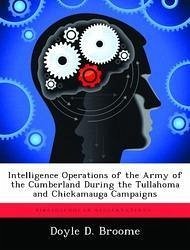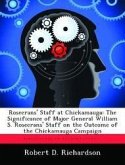This study is a historical analysis of the intelligence operations conducted by the Union Army of the Cumberland between 15 May 1863 and 18 September 1863. The study analyzes two key campaigns the Tullahoma (or Middle Tennessee) Campaign and the Chickamauga Campaign. The Tullahoma Campaign lasted from 23 June 1863 through 7 July 1863. The Chickamauga Campaign lasted from 10 August 1863 through 22 September. The study does not cover the actual Battle of Chickamauga on 19 and 20 September 1863. The study analyzes how Union Major General William S. Rosecrans used the available information to plan and conduct these two campaigns. The means used to gather intelligence were: spies; cavalry operations; the questioning of civilians, deserters, and prisoners of war; the forming of hypothesis by the commander; a network of signals; and newspapers. By today's standards, the commander in 1863 had a limited ability to gather, decipher, and then act on intelligence. Commanders actively gathered intelligence in spite of not having sophisticated gathering means, and dedicated interpretation staffs. The commander analyzed the accumulated information and decided on how to use it. The study concludes that: The Tullahoma Campaign was successful because Rosecrans used the available intelligence effectively.
Hinweis: Dieser Artikel kann nur an eine deutsche Lieferadresse ausgeliefert werden.
Hinweis: Dieser Artikel kann nur an eine deutsche Lieferadresse ausgeliefert werden.








